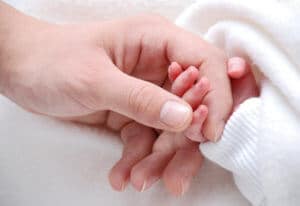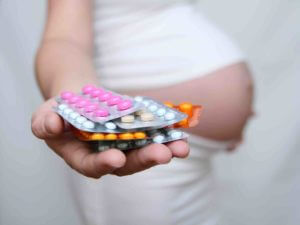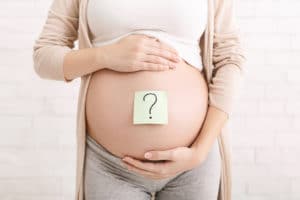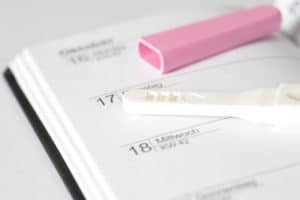The life of every human being begins with it: the placenta. It is probably the most mysterious organ in the human body and is currently very trendy.
Some women expect additional energy from the placenta, as it is also called, protection against depression and an increase in the amount of milk – and eat the temporary organ after birth.
Perhaps you too are looking for answers to the question of what the placenta actually is, what functions it has, what complications there are, and whether it is worth eating it up. The answers to these and other questions can be found here.
Table of contents
Definition Of The Placenta
Along with the umbilical cord, the amniotic cavity, and the membranes, the placenta is part of the prenatal protective and supply structures of the newborn. The placenta is a temporary organ that forms in the uterus at the beginning of pregnancy and attaches to the uterine wall.
Basically, the placenta can have different positions depending on where implantation occurs. Usually, this is in the upper part of the uterus. Although it is also called the placenta and is usually attributed to the mother, the placenta also consists of embryonic cells.
The placenta separates and connects mother and child during pregnancy by enabling the exchange of substances and gases, ensuring the removal of waste products from the child, and filtering out many toxins and harmful substances from the mother’s blood by means of the so-called placental barrier before they can reach the child.
This explains why, for example, alcohol and many medications are taboo during pregnancy. But other substances also manage to pass through the space barrier.
Pathogens that can reach the newborn despite the placental barrier are summarized under the abbreviation STORCH (STORCH includes syphilis (Treponema pallidum), toxoplasmosis, chlamydia, Coxsackie virus, hepatitis B virus, hepatitis C virus, HIV virus, listeria, parvovirus B19, Streptococcus agalactiae, varicella zoster virus and Zika virus, as well as rubella, cytomegalovirus and herpes simplex). However, particulate matter, for example, has also been detected in the placenta.
In addition, the placenta produces numerous hormones that, among other things, ensure the maintenance of pregnancy and the adaptation of the maternal organism to pregnancy.
If something goes wrong with the development of the placenta, it can have serious consequences and even become life-threatening for mother and child. Pregnancy diseases such as gestational diabetes, preeclampsia or gestational hypertension are associated with problems of the placenta.
In addition, there is circumstantial evidence that problems with placental function could later lead to cardiovascular disease in the mother and diseases such as hypertension, type 2 diabetes or stroke in the child as an adult.
Following the birth of the child, placental detachment occurs. If complete detachment does not occur, scraping is necessary, otherwise there is a risk of postpartum hemorrhage.
If a fall or blow to the abdomen occurs during pregnancy, this can lead to premature detachment of the placenta – a life-threatening emergency for mother and child.
The name placenta is derived from the Latin word placenta, which means cake. The terms placenta or fruit cake can also be derived from this. The spelling placenta is also used in English.
What Are The Functions Of The Placenta?
During pregnancy, the placenta performs numerous endocrine functions for the baby and acts in place of the lungs, liver and kidneys. Antibodies, nutrients and oxygen are passed to the baby, while waste products are removed.
From a medical perspective, the placenta performs the following functions for this purpose:
Hormone Production
The main hormones produced by the placenta include HCG, estrogen and progesterone.
Gas And Substance Exchange
Physicians distinguish several modes of transport, including active and passive transport. Passive transport includes simple diffusion and facilitated diffusion. Active transport includes pinocytosis.
Via active transport, the child is supplied with amino acids, inorganic ions, fatty acids, hormones, peptides and vitamins from the mother. By means of pinocytosis, it is also supplied with antibodies (IgG), lipids and proteins.
Via passive transport, bilirubin, CO2, glucose, urea, creatinine, lactate, O2 and water, but also numerous drugs, are shared between mother and child.
Note: The fat-soluble vitamins A, D, E and K, most proteins and antibodies (except IgG) can hardly or not at all pass the placental barrier. Therefore, newborns are given vitamin K immediately after birth because it is important for blood clotting.
Structure And Appearance: What Does The Placenta Look Like?
Doctors divide the placenta into three areas, which, however, are not visible to laypersons from the outside:
- The basal plate, predominantly maternal portion.
- The intervillous space with villous trees, also called the fetomaternal zone.
- The chorionic plate, predominantly fetal part.
The healthy placenta is disc-shaped, 15 to 20 centimeters in diameter, two to four centimeters thick, and weighs about 500 grams. Its surface appears spongy, soft and may resemble fresh liver.
The placenta has a mineral odor. Disturbances of the placenta are sometimes visible, such as holes or calcifications. For obstetricians, the condition of the placenta is revealing, so the placenta is thoroughly examined.
What Happens To The Placenta After Birth?
After birth, obstetricians check to see if the placenta has completely detached from the uterus. If it has, there are two options:
Option 1:
The mother can take the placenta with her. It is legally her property and she can do what she wants with it. If you want to take your placenta home, it works best refrigerated in a leak-proof container.
Option 2:
The clinic will dispose of the placenta unless the mother/parents have a claim on it.
In many cultures, there are certain customs surrounding the placenta. These include, for example, postpartum burial or burying the placenta to plant a tree (tree of life) on top of it.
In traditional Chinese medicine (TCM), the placenta is dried, powdered and put into capsules to be taken as a kind of nutritional supplement.
And women in the Western world are also considering eating their own placenta. Placentophagy, as eating the placenta is called, has become a trend among celebrities.
Placentophagy: Eating Placenta – A Good Idea?
In the animal kingdom, it is common practice to eat one’s own afterbirth. It cannot be ruled out that this practice was also common in humans in the past. When women today feel the urge to eat their placenta, they promise themselves many benefits: It is said to make them fitter, stimulate milk flow and prevent depression.
The placenta can be roasted in a similar way to meat, or chopped up and made into cakes or a smoothie. One’s own placenta can also be processed into inconspicuous capsules – for the price of several hundred euros.
But the health effect of placentophagy is controversial. Randomized studies, as is customary in medicine, have not yet been conducted. And medical experts are even warning about the risks of the trend.
Sophia Johnson, a physician, and researcher at the Placental Laboratory of Jena University Hospital understands that women subjectively feel better after taking the placenta. Still, it remains unclear whether the effect is hormone-related or just a placebo.
Johnson, who has advanced training in homeopathy, does not intend to generally discourage women from eating their placenta, though she does want to educate. She advises against eating placenta for mothers who themselves or their child suffered from infection during pregnancy.
Then there would still be a risk of infection. In addition, pollutants and heavy metals can accumulate in the placenta. Those who live in a polluted environment, for example, could be affected.
No Incision During Lotus Birth
Normally, the birth is immediately followed by the cutting of the umbilical cord to separate the newborn from the placenta. In lotus birth, the incision is deliberately omitted. The baby and placenta remain connected until natural cord separation occurs.
This usually takes between three and ten days. During this time, the placenta, washed and wrapped in a cloth, remains at the baby’s side. To preserve the placenta, it is rubbed daily with salt, herbs, and essential oils.
Nevertheless, there is a risk of infection. Therefore, lotus birth is not offered by clinics and should always be accompanied by an experienced midwife.
Placenta Praevia: Malposition Of The Placenta
The placenta is formed where the egg implants. Usually, this is in the upper part of the uterus, on the anterior wall (also called the anterior wall placenta) or posterior wall. Both are unproblematic but influence whether you feel the baby sooner or later.
However, the placenta is not always in a favorable position. In about 0.5 percent of pregnant women, the placenta does not lie as it should. Doctors call this placenta praevia and differentiate between four abnormal positions depending on the position.
The causes of such placental malpositions can vary: rapid pregnancy succession, previous miscarriages, abortions, surgeries or cesarean sections.
Important to know: Placenta praevia is not diagnosed until after the 24th week of pregnancy, since the placenta can still grow upward until then. Despite the diagnosis of placenta praevia, the pregnancy can proceed without complications.
However, close medical monitoring during pregnancy and delivery by cesarean section is necessary.













9 thoughts on “What You Always Wanted To Know About The Placenta”